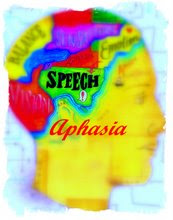Sarah Steedman, Louise Porteous
Early identification of speech-language delay is important, because 90 per cent of brain growth takes place in the first three years of life, with the critical period for language development beginning prior to birth and waning in the fourth year of life. Therefore, the earlier problems are identified and managed, the better the outcomes.
Exact figures for language and speech disorders vary according to the definition and population used. However, there is a generally accepted range of between 3 and 10 per cent in preschool children. A smaller proportion has more severe and persistent problems.
Who is at risk?
The exact cause of speech-language difficulties is still unknown. However, being a boy is a significant risk factor! Overall, as with other developmental difficulties, boys are around three times more likely to have speech-language difficulties than girls.
A family history of speech-language difficulties is significant. The incidence in families with a history of specific language impairment is estimated at 20 to 40 per cent compared with around 4 per cent in the general population. There can also be reading or spelling difficulties in other family members.
Other risk factors include genetic disorders, eg, Down syndrome and sex chromosome disorders. Biological risks include in utero exposure to alcohol, ie, foetal alcohol spectrum disorder, and damage to motor pathways, eg, cerebral palsy. Children born prematurely have a higher incidence of speech-language problems, and cognitive skills will also affect a child’s ability to understand and use language.
There is still some uncertainty about the exact impact of chronic otitis media on speech-language development. Some studies suggest there is no compelling evidence for otitis media being associated with significant deficits in language development. Others believe, while otitis media is rarely the primary or sole cause of significant language impairment, it may be a substantial contributory factor.
Environmental and social factors can also have a significant effect. Children from economically deprived backgrounds are at significant risk of language delay. It is more common in families where there are several children, multiple births and higher levels of family stress, including parental mental health problems and in situations of neglect.
NEXT..............................................
 The shift for the mega-popular strip For Better or For Worse from real-time soap opera into a hybrid strip of frozen-in-time framing sequences around older runs of the feature will come sooner rather than later. Really sooner. Universal Press Syndicate has announced that the new format begins Monday, September 3.
The shift for the mega-popular strip For Better or For Worse from real-time soap opera into a hybrid strip of frozen-in-time framing sequences around older runs of the feature will come sooner rather than later. Really sooner. Universal Press Syndicate has announced that the new format begins Monday, September 3.




